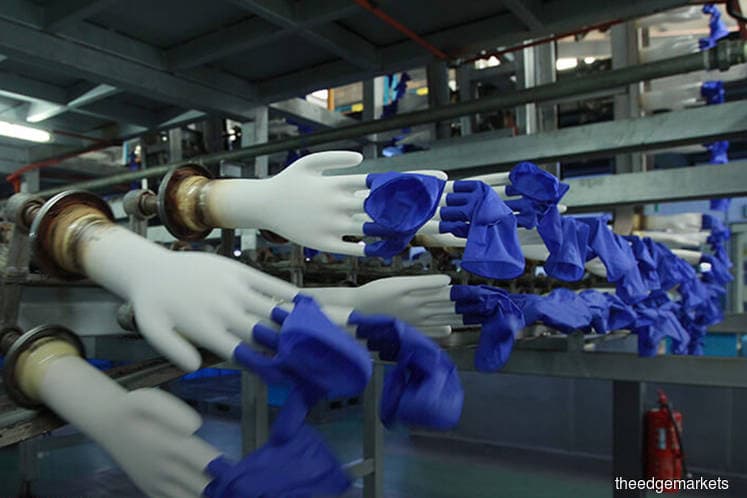
This article first appeared in The Edge Financial Daily on June 6, 2018
Rubber glove sector
Maintain underweight: There is not much excitement stemming from the rubber glove sector. Two of the three companies under our coverage — Top Glove Corp Bhd and Kossan Rubber Industries Bhd — posted results that were in line, while Hartalega Holdings Bhd missed expectations for the second straight quarter on the back of cost pressures.
Sector core earnings contracted 4% quarter-on-quarter due to narrower margins. We note the street is still projecting earnings to rise 28% year-on-year in view of a strong demand for rubber gloves (mid- to high-teens growth versus 12-year average of mid- to high single-digit annually). Although the first quarter of 2018 (1Q18) performance continued to be tepid, share prices of glove makers are generally holding up well (save for Kossan) as the market has developed an affinity towards export-related stocks post Malaysia’s 14th general election. At present, the average sector earnings run rate projected by the street over the next two quarters is RM311 million. We find this remains high and is 33% above 1Q18 numbers. In our opinion, consensus could be too bullish, suggesting downside risk is not being adequately accounted for.
We stay tactically bearish on the sector due to overly stretched valuations at +2 standard deviation above five-year forward mean price-earning. Also, there is a budding risk of short-term earnings disappointment and this will not bode well for the market. Seeing that interest in this space remains strong, we view it as a fitting opportunity to sell on strength and realise the windfall generated over the past nine months.
There is a rising threat of slower demand as we observe tapering forward orders. We note Hartalega has about two months of forward orders, a tad lower than February 2018’s three months (sold out until June-July 2018). Top Glove is facing the same phenomenon as well; sales backlogged for its nitrile gloves has shortened to 40 to 50 days from 60 days. Another implication from this could be rising competition where a more nitrile glove supply capacity is coming on stream. Also, this could be due to a scenario where the vinyl glove undersupply in China is recovering as capacity restarts after 2017’s environmental clampdown, prompting price-sensitive food and beverage customers to switch back to the more economical glove offerings.
A rapid rise in minimum wage is not ideal. Pakatan Harapan’s manifesto also includes raising the minimum wage to RM1,500 from RM1,000 currently (+50%). The intention is to share the incremental cost increase of RM500 on an equal basis between the employer and the government. This is supposed to be implemented in the first term of the Pakatan government being in control but is temporarily postponed due to financial constraints. Besides, Pakatan pledged to reduce the number of foreign workers to four million from six million. Indeed, both have a negative impact on the sector if they come into effect.
We estimate every 10% rise in labour cost could reduce glove makers’ 2018 to 2020 earnings by 5% to 6% (to counteract this, average selling price has to increase by 1%). If the closure of vinyl glove plants in China becomes permanent (which we think otherwise), we reckon our Malaysian glove players deserve a valuation rerating. Benign competition and resilient margins are huge positives for the sector. That said, over the longer term, this is unlikely to happen, in our view. — UOB Kay Hian, June 5